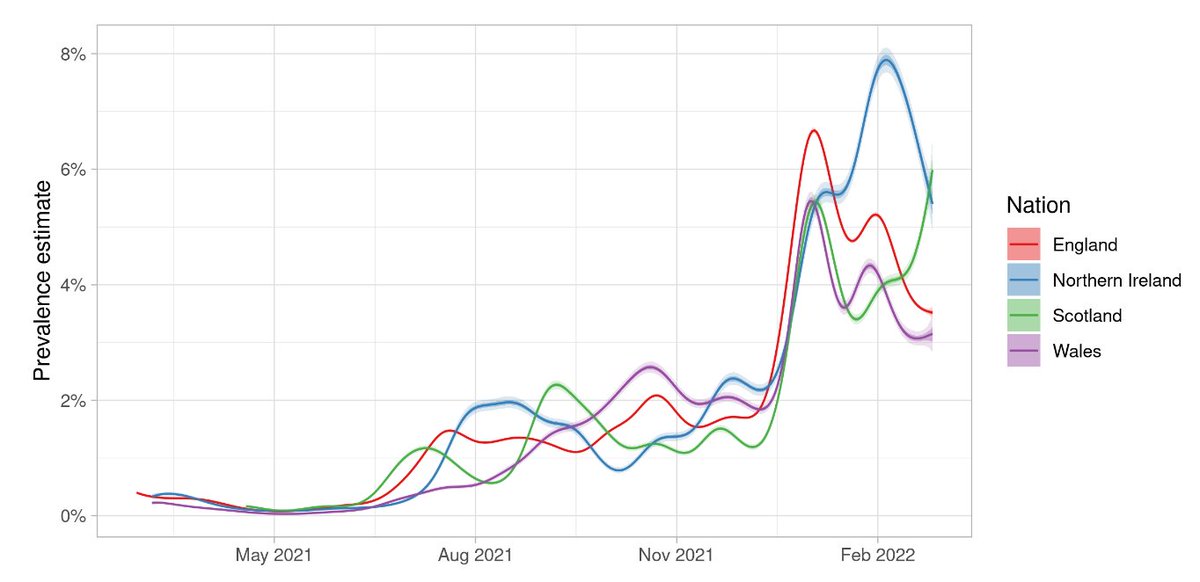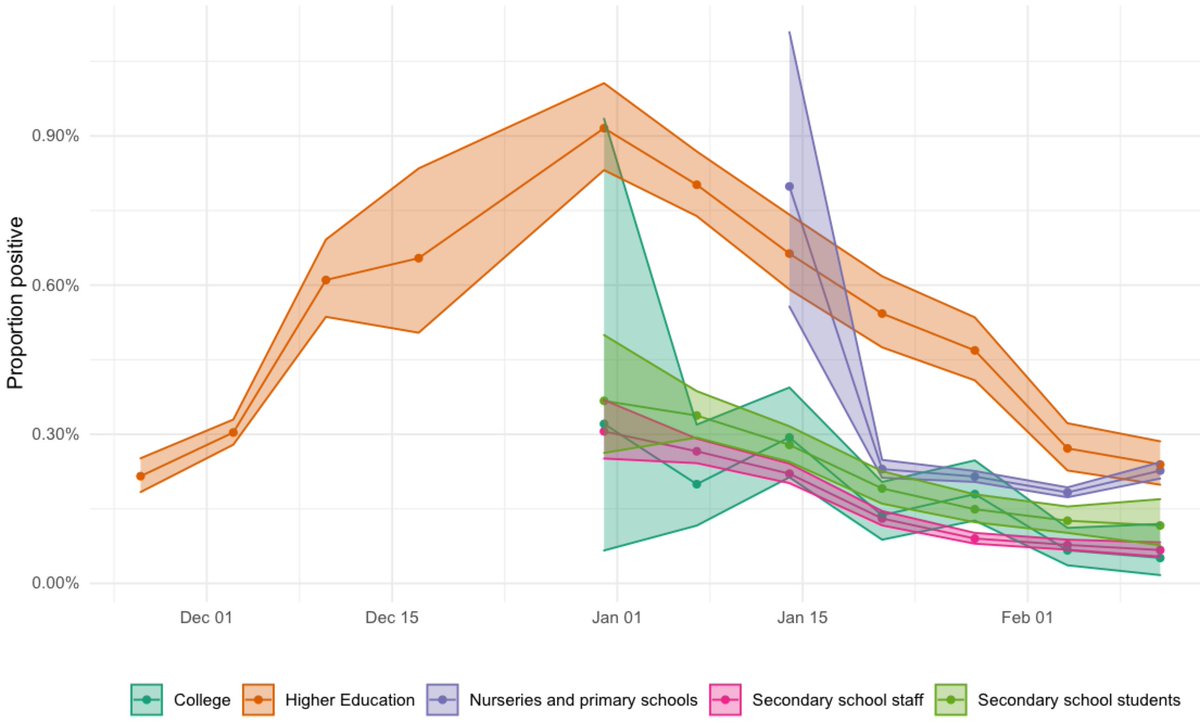Much attention has recently focused on increases in the reproduction number R across the UK, with some speculation on the impact that reopening schools may have had. But for that it is too early to tell. 1/8
First, the numbers. According to latest SAGE estimates, R in the UK and England was between 1 and 1.2. gov.uk/guidance/the-r… According to the REACT infection survey, the reproduciton number in England was between 1.4 and 2.0. imperial.ac.uk/medicine/resea… 2/8
Our latest @cmmid_lsthm estimate of the reproduction number in England, based on today's data, was between 1.1 and 1.4. epiforecasts.io/covid/posts/na…
All these estimates use slightly different methods and data but all point at the same trend: increasing numbers of infections. 3/8
All these estimates use slightly different methods and data but all point at the same trend: increasing numbers of infections. 3/8
So when did R cross 1? In most regions it probably did so a while ago. Take London, for example. Our estimates from test-positive cases point at an R of 1.1-1.2 and have done so for at least two months. These numbers are consistent with a steady exponential increase in cases. 4/8 

Importantly for interpreting these estimates, today's case data only tell us about new infections (and therefore R) until the end of August. That is because infections take about 5 days to cause symptoms, plus 4 days until a test result (if done right after symptom onset) 5/8
These test results then take another few days to enter the daily data. In other words, any observed increases in R do not yet reflect schools reopening in early September, let alone the changes brought in this week. 6/8
This also means that we would expect cases to grow for at least another two weeks just catching up with infections that have already happened. However, if fewer people can get a test, this could cause a decrease in daily case numbers even if infections have been increasing. 7/8
In summary, R was almost certainly greater than 1 in most of England before schools reopened. It will take another 2-3 weeks before we see any potential effect of this Monday's policy changes. In the meantime, it's on all of us to minimise potentially infectious contact. 8/8
• • •
Missing some Tweet in this thread? You can try to
force a refresh











